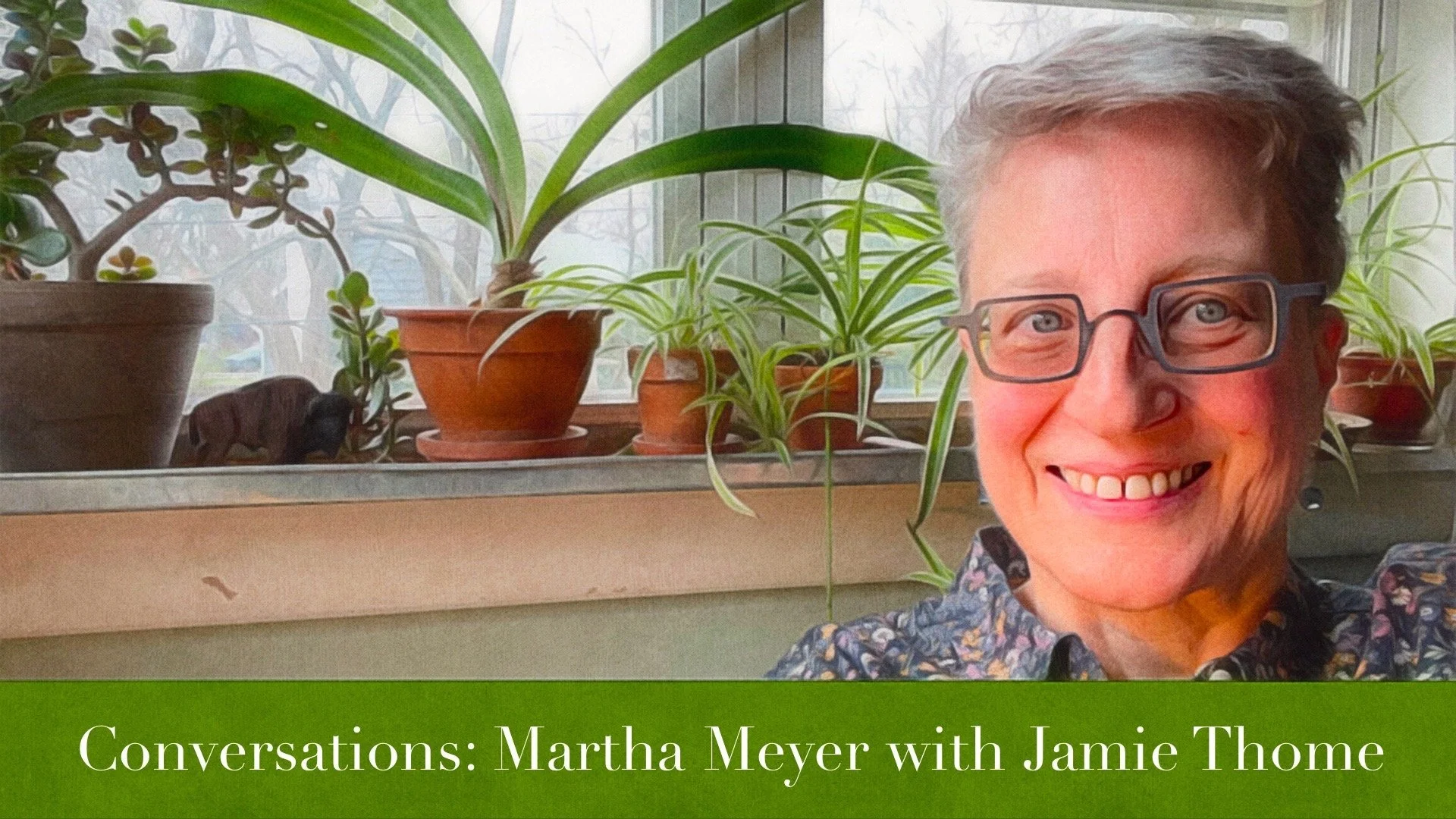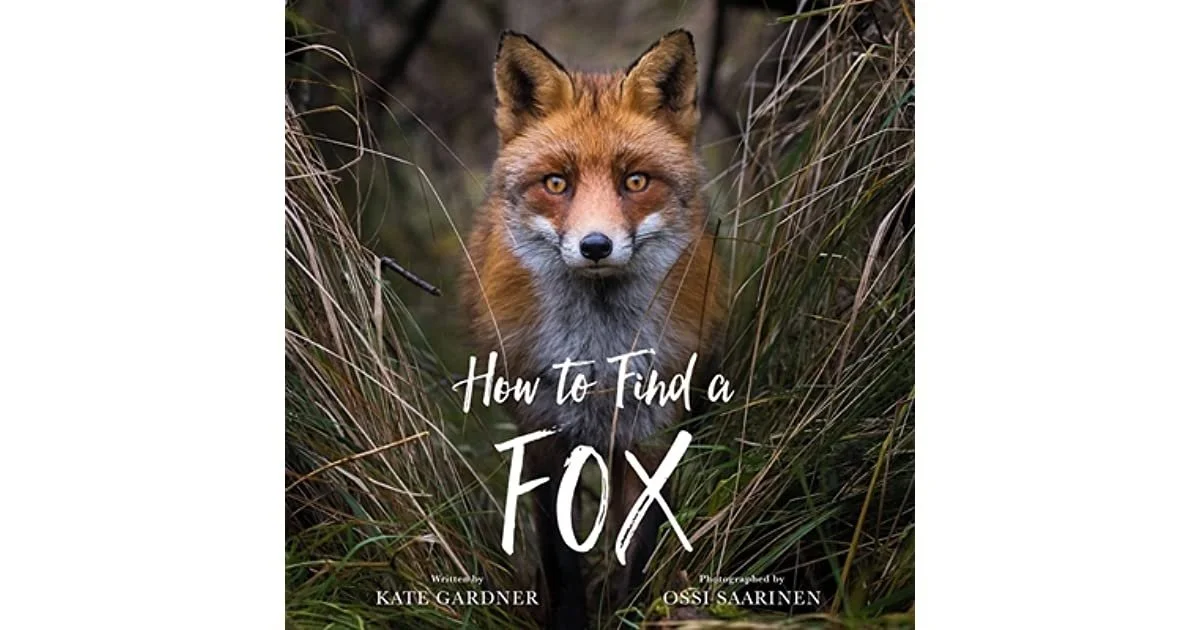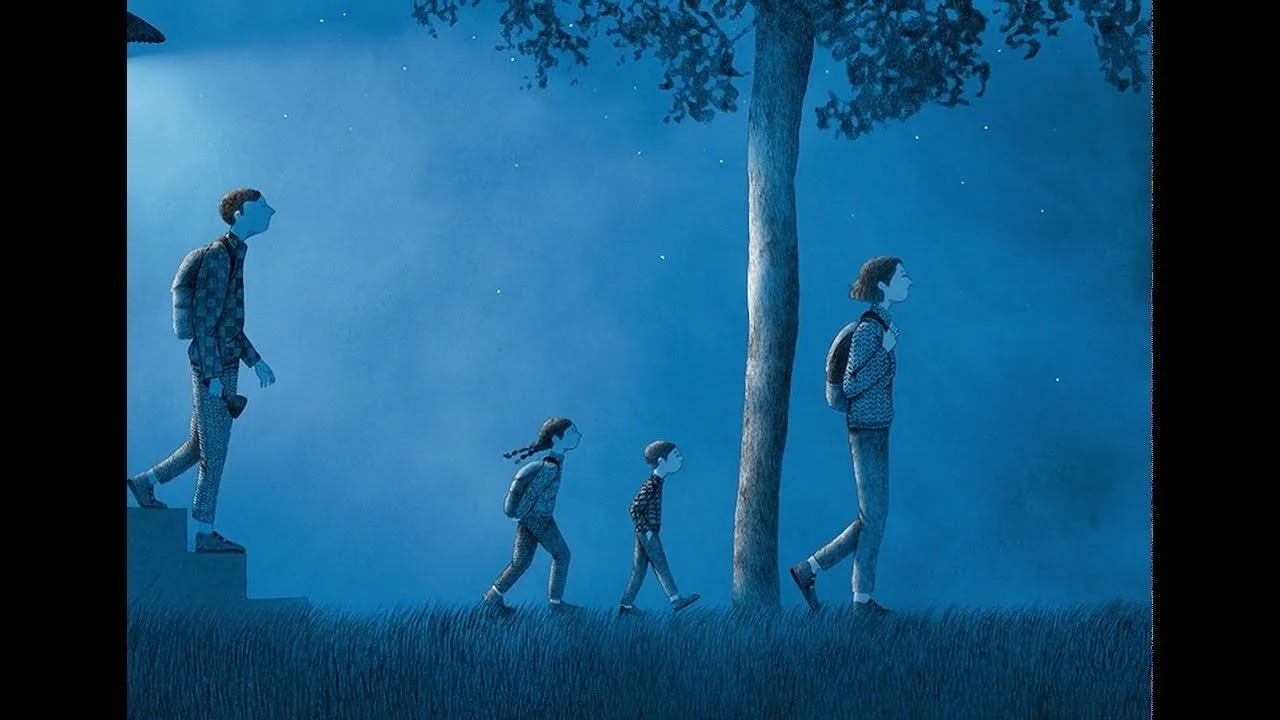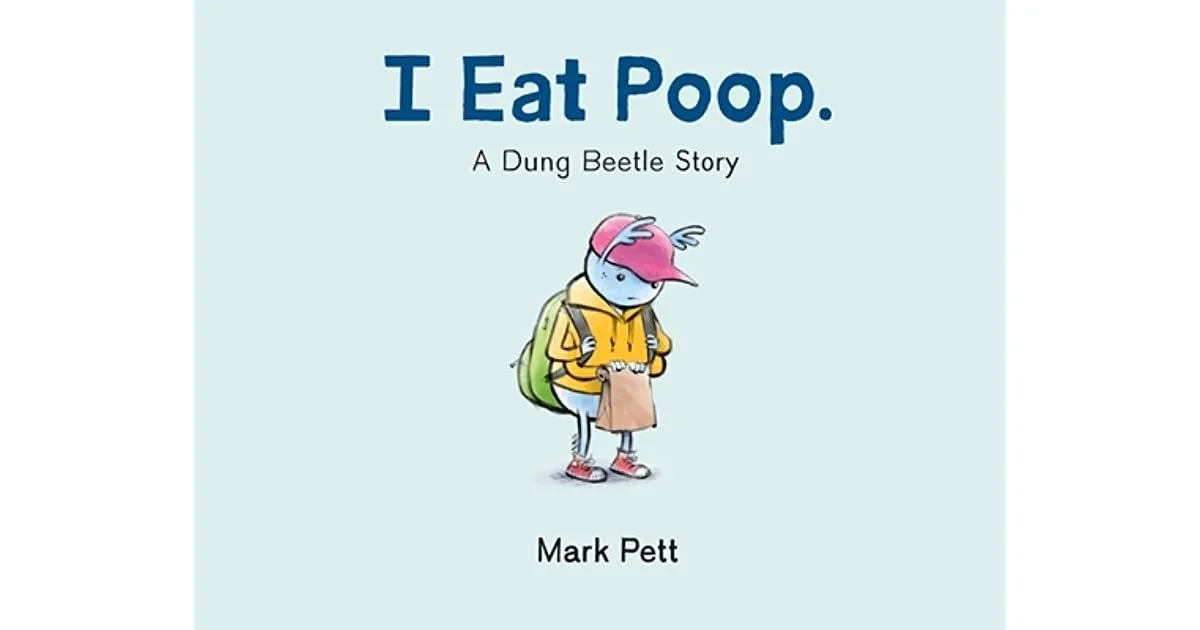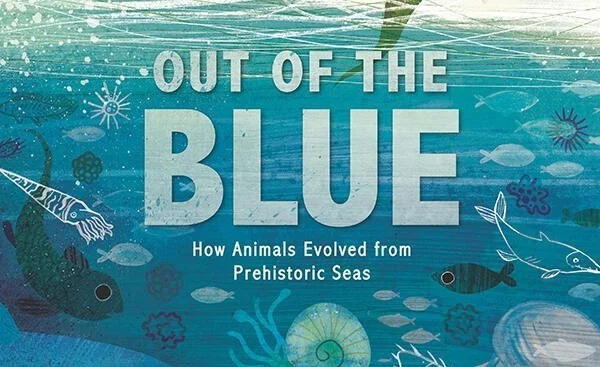Library Assistant Martha Meyer with Jamie Thome
ABH Conversation: Martha Meyer, Evanston Public Library library assistant and Blueberry Award Founder and Committee Leader
Recently, Evanston Public Library announced that Kate Gardner’s How to Find a Fox is the first winner of the newly minted Blueberry Award.
The Blueberry Awards, including the 25 honor Books and the Blueberry Changemaker Books, are given to children’s books for 3 - 10 year olds in a certain year that help kids love nature and act on its behalf. EPL’s Martha Meyer recently sat down with Jamie Lou Thome to chat about how the award came about, why it’s necessary, and more. Here is their conversation:
There are a lot of awards for Children’s Literature out there, for picture books and novels alike, the most well-known being the Newbery Award and the Caldecott Award. Why was it important to you to create and implement an award (and list) for books about nature and the environment?
I have been studying kids’ books about Nature Play and presenting them at Early Childhood or Nature Play conferences for a decade. I am always frustrated at children’s literature awards season that my annual favorites, the ones that brilliantly help kids study and/or adore the earth & sea, aren’t usually selected. Teachers can tell right away when an author and illustrator/photographer collaborate to make learning not just fun but a joy! However, the existing national awards committees would sometimes award a nature book a Siebert or a Seibert Honor perhaps and that would be it.
About a year and a half ago, I decided to stop waiting for someone important to fix this and decided to give it a try. And luckily for me, Evanston Public Library has some brilliant folks that were game to help: Author, Collection Development Manager, and School Library Journal blogger, Betsy Bird; Children’s Librarian and 2022 Legacy Committee chair, Brian Wilson, plus the lead nonfiction readers for our 101 Great Books for Kids committee, Bridget Petrites and former Master Gardener and avid birder Julie Rand as well as two scientist library employees - Beatriz Echeverría(marine biology from Spain) and Sally Battle (neuroscience at Northwestern labs) to guide us on selecting only the best science.
Why now?
How to Find a Fox by Kate Gardner
The best time for this children’s book award was in 1970! However, the second best time for this award is now. Our pretty blue planet, our island home, is threatened to the point of mass extinction. AND YET we are still not universally savvy about how best to help kids help the earth. We spent the years since 1970 either terrorizing kids or anesthetising them. Neither leads to the kind of aware global citizenship that Evanston parents want for their children! There is a special art in selecting the right book that both DELIGHTS and EMPOWERS kids while also, crucially, sharing the truth. That’s what we’re aiming for!
Of course, at the same time, like many, I took stock of what I was doing personally to heal the planet. It was a joy to read about how the early pandemic was bringing some of the earth’s creatures some breathing room. So, how can someone who’s dedicated her work life to children’s literacy do anything at this late stage about climate change? Well library employees can, like everyone else, do the best job we can in our personal lives; we can push our workplaces and community organizations to do better, too. We can also develop and present some great ecological programs for folks to attend in person or online; Bea Echeverría has been really leading the library in this area. But librarians are also book selectors in addition to running library programs. The Blueberry Awards represents a unique gift that library employees can give our community, selecting the very best books for our kids to learn about the natural world and do their best to heal it, right here, right now. So part of the Why Now question is that the pandemic made us realize we couldn’t waste time waiting for a national committee to tackle this subject.
How did you form your Blueberry Committee? What criteria did you use to select members for the committee?
To be honest, at first the criteria was a first name beginning with B: Betsy, Brian, Bea, Bridget! (editor: HAHAHA!) No, the Blueberry Award grew out of the great team we have on our Annual 101 Great Books for Kids committee which selects the current year’s best crop of books and publishes it in November, just in time for holiday giving.
At first, other committee members would listen patiently when I rhapsodized about some nature book. Then, they started finding and recommending nature books for me, knowing I liked them (library employees are really good at that.) Then they started seeking out and reviewing the nature books themselves so there would be more of us who voted for nature books to be selected by the 101 committee each year. Unbeknownst to us, the Blueberry was incrementally emerging from the 101 committee!
To answer your question about committee criteria, I was trying to gather together two skill sets to go with the dual goal of the Blueberry (the very highest quality children’s books both fiction and nonfiction AND the best, most engaging science and information in books). So I was deeply grateful to Betsy and Brian that they offered their national expertise to the committee. They have together been responsible for helping to winnow and select the best children’s books nationally for years now. Then I wanted folks who tenaciously read nonfiction children’s books for the 101 committee every year - Julie and Bridget! Then, I went for employees who were scientists before they started working in a library and who had a passion for the earth – Bea and Sally. Finally, we got some free consulting help from the Evanston Environmental Association board chair, Karen Taira, a plant scientist who also earns her living teaching local kids about nature!
We are very excited this coming year to also include on the 2022 committee Kim Daufeldt, our children’s nonfiction buyer, Cara Pratt, our city’s Sustainability and Resilience Coordinator, and Ethan Johnson, from the Evanston Ecology Center who knows nature programming with kids so well.
It’s especially meaningful that you included folks with different backgrounds and skills on the committee, not only librarians. How did that decision come about, and how did that decision affect the narrowing down of books to keep on the Blueberry List?
This question may get at why we do not yet have a national Blueberry Award! We felt pretty strongly that the Blueberry Award winners shouldn’t just be especially literary and well illustrated books about nature. However, to truly evaluate children’s books about nature, you need to know the science and whether it is being honestly and clearly presented. So, scientists are required – people trained at the graduate level in the discipline. Lucky that I found 3 of those!
Speaking of library degrees, I don’t have an MLIS and the majority of the committee is not necessarily library- degreed, either. “Part timers - they get the job done!” to misquote Lin Manuel Miranda.
When you have a dual goal inevitably it is hard to make final decisions about the year’s crop of nature books! “Best Science!” Said one side of the room! “Best Literary Quality!” Said the other. It was an interesting final meeting, but our winner, How to Find a Fox by Kate Gardner, succeeds beautifully at both. At that meeting, we also created a category of our award called the Blueberry Changemakers for books that especially provide meaningful action for kids to do. Because, unfortunately, we can’t wait for kids to grow up to start fixing the problem; we all have to be working on the problem right now to the best of our current ability at whatever age or skill set that is. We can’t afford to leave kids behind in supporting our earth.
From The Night Walk by Marie Dorleans
As a Library Assistant at EPL’s Children’s Department, you need to read a lot of picture books as well as middle grade novels to keep up with your job. How did that dovetail into choosing books for your committee to discuss for the Blueberry List?
So many of us at Evanston Public Library, not just childrens’ library employees, are on the 101 committee! So we are getting a monthly introduction to all the new books, often before they are published. Betsy Bird, because she has a national column for School Library Journal, is sent a lot of Advanced Reader Copies of the year’s new books. So, the Blueberry Committee first gets access to the books through the 101 committee. However, after our first announcement of the Blueberry Awards we were contacted by two publishers wanting to submit books just for the Blueberry. Pretty cool, huh?
Very cool! I can’t wait until the Blueberry Committee is overloaded with advance copies or books that are submitted for consideration, as that will mean more people are taking notice. What are you looking for in the books that you’re choosing to include in the Blueberry List? This isn’t merely about the illustrations or the writing, but about the content as well—how does that make it harder to choose? Or does it make it easier for you to narrow down your list?
Great writers, illustrators and educators creating children’s books right now make it both easy to select and fiendishly difficult to narrow down our choices. The climate crisis means children’s writers and illustrators are feeling deeply called to do great work on behalf of kids loving the earth! April Pulley Sayre, that wonder of a nature book writer and brilliant photographer, put out a book as she was dying last year because kids need to know about sloths and the great work of preservation going on in Panama. (Published in 2022, Happy Sloth Day! is eligible for this year’s Blueberry.)
Blueberry books must:
Display Excellence in children’s literature in writing, illustration (or photography) and design and their relationship to each other.
Share nature and sometimes its peril with kids in an age appropriate but truthful way;
Be grounded in real biology, real science, told truly (at the time of writing)
Extra points for dealing with topics that are also in the City of Evanston’s Climate Action and Resilience Plan (CARP) goals!
The Blueberry Changemakers books also have to incite kids to real action that would make a real difference, not just make-work or greenwashing.
I Eat Poop. A Dung Beetle Story by Mark Pett
How do you envision parents, guardians, caregivers, and teachers to utilize this list with the children they care about?
First, I want my fellow library employees around the country to read about these books in Betsy Bird’s National Fuse #8 Column, buy them, and share them in displays, reader’s advisory, and programs with kids!
Locally, I hope child care centers, elementary schools and nature nonprofits use these books with kids, too!! I have shared the list with The Chicago Botanic Garden, The Morton Arboretum Tree School, the Evanston Ecology Center, and the Alliance for Early Childhood in Winnetka.
Finally, and most importantly, parents during this pandemic are so stressed. I hope this list gives them a break, a chance to unwind with their child or children around a beautiful book without having to deal with fear created by a clumsy or alarmist author. Parents wear so many hats. Raising ecology and ecojustice aware children has to jostle with making lunches, tutoring homework, running to activities on top of earning a living and caring for elders. Maybe this list takes one small concern from a parent’s back and gives them assurance that books can be a doorway and an invitation to loving the outdoors.
What is the dream scenario for you?
I have an abundance of dream scenarios. However, here’s one for you that is really happening: Ethan Johnson at the Evanston Ecology Center is working on creating an evening program for families that reads How to Find a Fox and then takes parents and kids out on the trail at twilight to learn about foxes! (No guarantees, but we do have foxes in Evanston!)
What are your own connections to environmental issues that led you to spearhead the creation of the Blueberry Award?
I came to the Blueberry through the lens of my work supporting early childhood and elementary school teachers to use the very best nature books for kids – that’s been a passion for years!
In terms of my own personal connection to environmentalism, I am vegan, a recycler, a composter, a solar roof owner, and a dabbler in the buy used/trade/gift economy rather than always buying new. I am on the Green team at my church. I helped raise my kids to love hiking, notice the season changes, and the glory of the earth, sky and waters. Many in Evanston do much more than me, especially those working on environmental justice here and those who helped the city enact the CARP goals – and keep working on them!
Out of the Blue by Elizabeth Shreeve
What are some books that you consistently find yourself recommending to your young patrons?
Classics I recommend include Eva Ibbotson’s novels like Journey to the River Sea and Island of the Aunts, both fantasy books with great ecological consciousness along with the magical creatures and heartfelt adventures. Also Jean Craighead George’s My Side of the Mountain, the old classic about a boy living in the wilderness for a year who trains a wild falcon to hunt for him. I love Peter Brown’s brilliant The Wild Robot, trusting younger elementary school kids to dream of the future with him but in a way that loves nature. Speaking of climate, I highly recommend How to Change Everything by Naomi Klein for prospective climate activists in upper elementary, middle school, high school, and any adults who’ll listen to me. Here’s a taste of some favorite nature books I don’t get to recommend enough:
Dear Treefrog by Joyce Sidman Illustrated by Diane Sudyka 2021 A lovely story about a young girl who first befriends a tree frog in her new home and that connection helps her to make a new friend. The very method we use for exploring nature (quiet calm attention) actually heals us. A brilliant and beautiful book about that moment of connection with nature. Plenty of science and local artist Diana Sudyka’s beautiful art; a wonderful book!
Feel the Fog by April Pulley Sayre (2020) This book features the author’s incredible photos that illustrate a poem about fog WHILE also being a good science introduction to one aspect of the water cycle. There is a 2 page spread in the back that answers lots of kids’ questions about fog. An absolute winner. Don’t miss the companion books (also gorgeous photos illustrating a poem that shares great science.): Raindrops Roll (2015), Best in Snow (2016), Full of Fall (2017). Preschool – 2ndgrade. Also, would introduce a poetry or adjective unit perfectly. These are classics.
One Million Oysters on Top of the Mountain by Alex Nogues and Miren Asiain Lora translated by Lawrence Schimel (2021 in USA; 2019 in Spain) Brilliant, engaging, perfect explanation of geological time for kids! This one teaches looking carefully and wondering and then learning the most amazing things. WOW! AND originally written in Spanish so we should (?) be able to buy both Spanish and English books!
Tracking Pythons: The Quest to Catch an Invasive Predator and Save an Ecosystem by Kate Messner (2020) It’s a master of disguise, can swallow an entire baby deer, and is rapidly devouring the Florida natural wildlife. How do you stop an invasive species that’s practically invisible? These scientists may have found the answer. The book works for about 3rd grade – 8th grade, but it would be a wonderful prep for teachers discussing invasive species, predator prey relationships and also a snake unit!
The Girl from the Sea by (2021) by Molly Knox Ostertag. Fun graphic novel about one girl's amazing summer. So happy to see the selkie story updated and modernized! I loved the ecological subplot: we need more queer eco warrors. There is a love story, but the girls only kiss. 4th grade and up
We Became Jaguars by Dave Eggers illustrated by Woodrow White. Gorgeous picture book about a grandmother winning over a young grandson she’s babysitting through imaginary nature play. But wow! Those pictures! Preschool. (yes, THAT Dave Eggers)
The Water Lady by Alice B McGinty illustrated by Shonto Begay (2021). The story of the Navajo reservation’s water situation is told through 2 perspectives – one thirsty preschooler and the school bus driver who also fills water tanks for everyone without running water on the reservation. A book that while deeply thankful for the work of the Water Lady, clearly shows that water is life (and that climate justice is long in coming.) The illustrator but not the author is Dine (Navajo). Ages 3 -8
One caveat: I recommend books to the children of Evanston based on THEIR interests! So consistently that means helping kids find books about trucks, trains, animals, minecraft, fantasy novels like The Lightning Thief, highly illustrated novels like Diary of a Wimpy Kid, graphic novels like Dog Man and also Smile, books about building LEGOS and easy to read biographies like the Who Was Series.
What are books that you’ve loved throughout your life?
I regularly re-read JRR Tolkien’s The Lord of the Rings and each time it seems deeper and more helpful to me. It got me through the death of my father years ago and now speaks clearly to us in the climate crisis about doing something even if you can’t muster hope about it and fixing a natural world overwhelmed by war.
“I wish it need not have happened in my time,” said Frodo. “So do I,” said Gandalf, “and so do all who live to see such times. But that is not for them to decide. All we have to decide is what to do with the time that is given us.”
What are you reading right now?
I am reading books for the 101 Committee, of course! Blue: A History of the Color as Deep as the Sea and as Wide as the Sky by Nana Akua Brew-Hammond and illustrated by the incredible Daniel MInter should appeal to anyone associated with Artist’s Book House but I warn you parts of it are filled with sorrow. I just finished it. Amazon says: “Discover a world of creativity and tradition in this fascinating picture book that explores the history and cultural significance of the color blue. From a critically acclaimed author and an award-winning illustrator comes a vivid, gorgeous book for readers of all ages.”
What are some books that you’re reading for next year’s Blueberry List? Can you give us a sneak peek?
But of course!
Where Wonder Grows by Xelena Gonzalez, illus by Adriana Garcia. An indigenous grandmother introduces different rocks to her granddaughters in both a scientific and spiritual way.
Solitary Animals by Joshua David Stein, ill. Dominique Ramsey. Stunningly beautiful book about how some animals don’t live in groups, with text that subtly supports the introverted humans among us too! Dominique Ramsey just graduated from SCAD, the Savannah School for Art and Design and I think she could take the children’s book world by storm! WOW.
Begin With Spring: The Life and Seasons of Henry David Thoreau by Julie Dunlap, ill. Megan Elizabeth Baratta. Thoreau - who knew? - was also a climate scientist and his data is NOW being used to track climate change!
Thank you, Martha!
About Martha Meyer
Martha grew up in Evanston, went to Northwestern University to study primitive narrative art, and is happy to be living and working here still! She’s been working for the Evanston Public Library since 2003 after leaving corporate marketing to raise kids. She has specialized in early childhood literacy as a full time employee but now, as a semi-retired part-timer, she combines her library and marketing interests by writing the EPL KIDS Newsletter that reaches 13,000 parents, caregivers, and taxpayers. The newsletter gets a 50 - 60 % open rate, so about 7000+ folks read the newsletter every 2 weeks!
